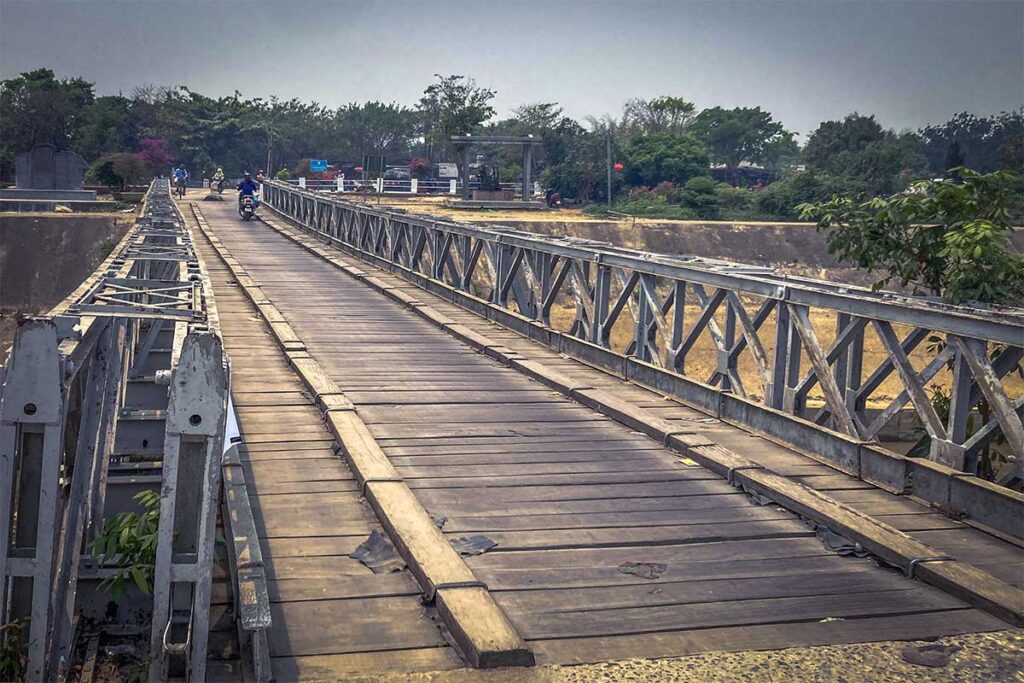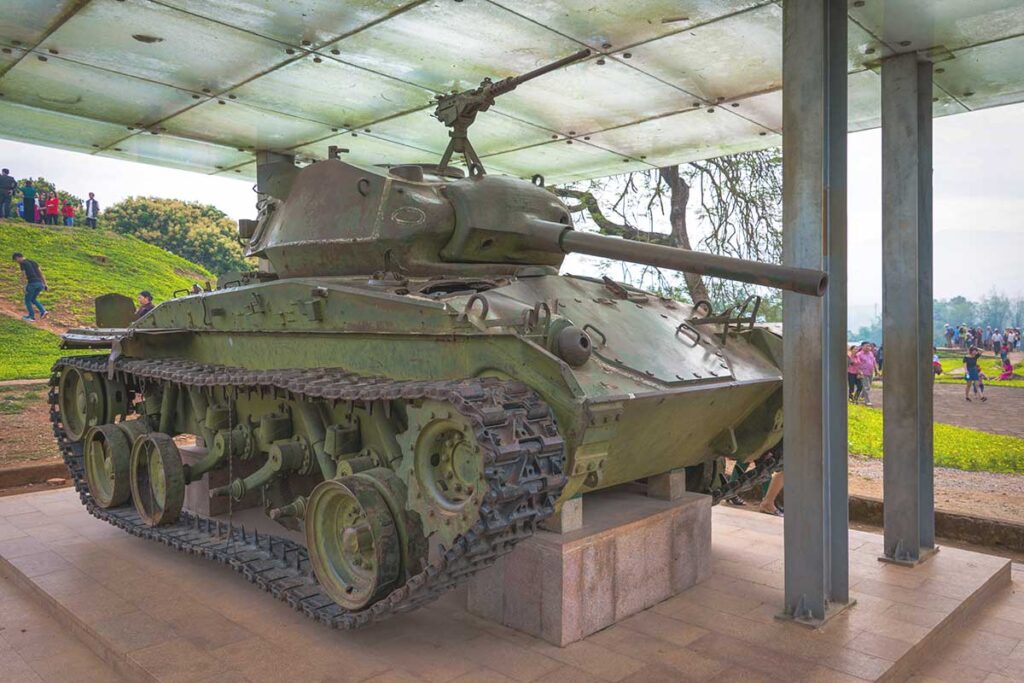Historical background of Muong Thanh Bridge
Muong Thanh Bridge was built by the French during the First Indochina War as part of their efforts to turn Dien Bien Phu into a heavily fortified stronghold. Spanning the Nam Rom River, it served as a crucial supply route connecting the French central command post with defensive bases in the eastern hills.
On May 7, 1954, during the final assault of the Battle of Dien Bien Phu, Vietnamese troops from Regiment 209 crossed this bridge under heavy fire. After taking out a four-barreled machine gun nest guarding the western side, they advanced across the bridge toward General De Castries’ underground bunker—marking the final turning point of the campaign.
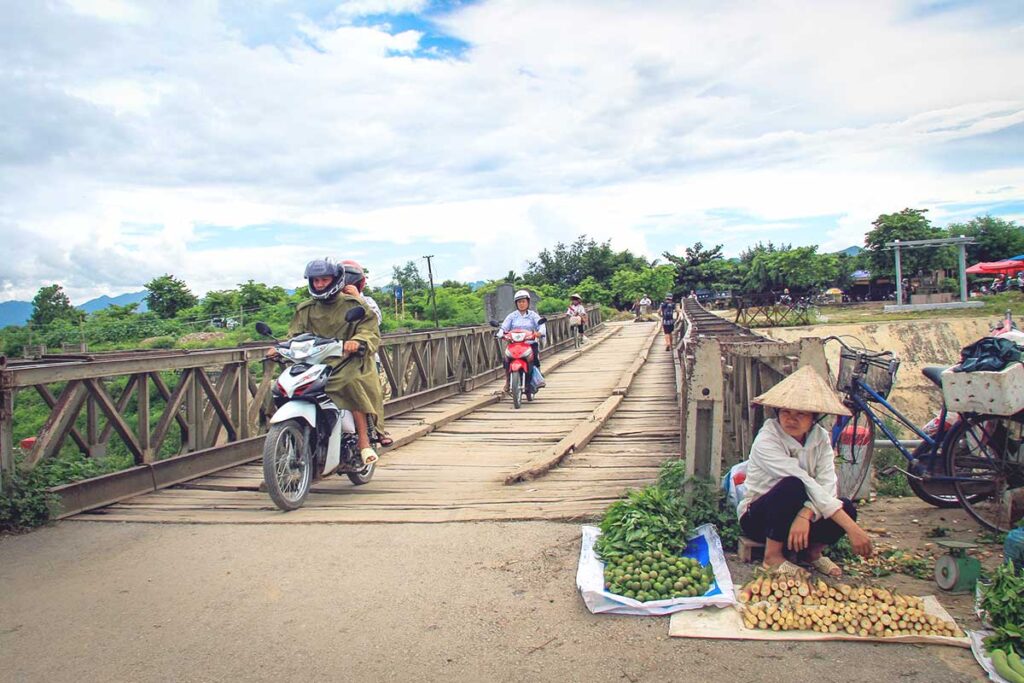
The bridge became a powerful symbol of Vietnamese determination and tactical success. Today, it stands not only as a physical relic but also as a reminder of the country’s struggle for independence.
Current appearance and Structure
Muong Thanh Bridge in Dien Bien Phu is about 40 meters long and 5 meters wide, originally built with wooden planks and iron beams—materials that still define its look today. Although it has been renovated several times for maintenance and preservation, the bridge continues to resemble its original wartime form.
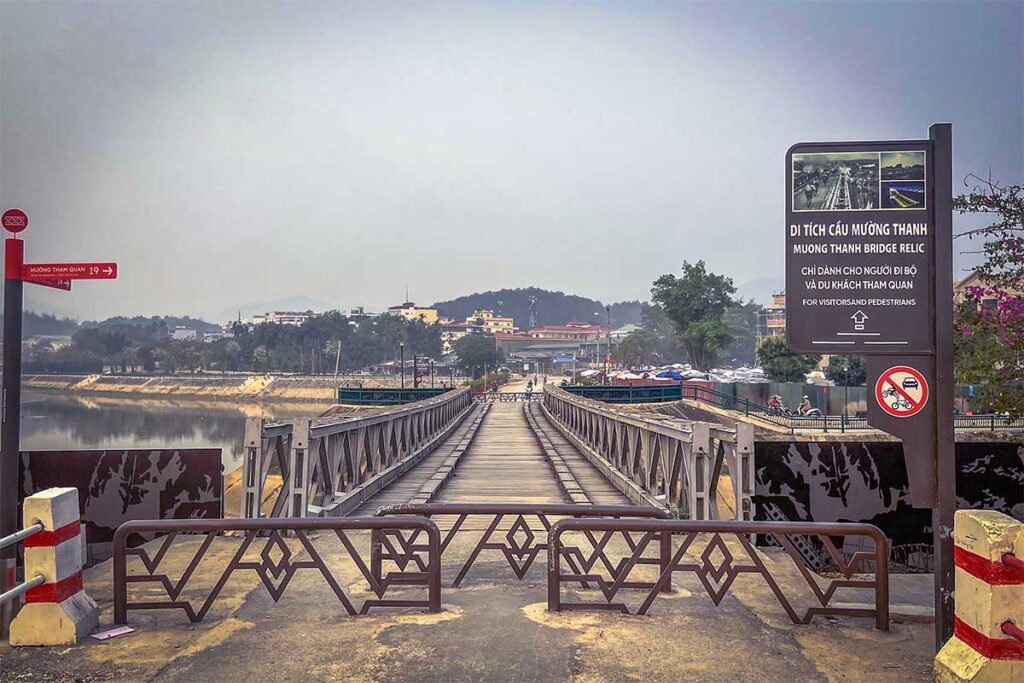
To protect the aging structure, cars and heavy vehicles are no longer allowed—only pedestrians and bicycles can cross. Signs at both ends enforce these restrictions, and recent concerns about overloading have led to safety upgrades, including repairs and the installation of a new lighting system ahead of the 70th anniversary of the battle.
What to see at the bridge
1. The bridge itself
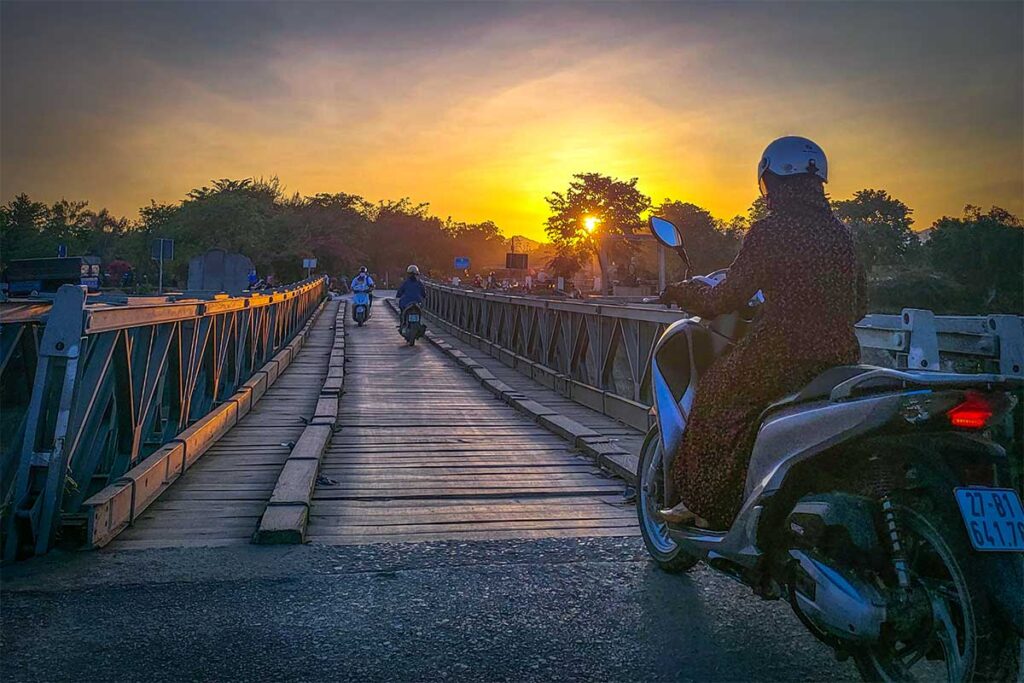
Walking across Muong Thanh Bridge offers open views of the Nam Rom River and a quiet moment to reflect on its wartime past.
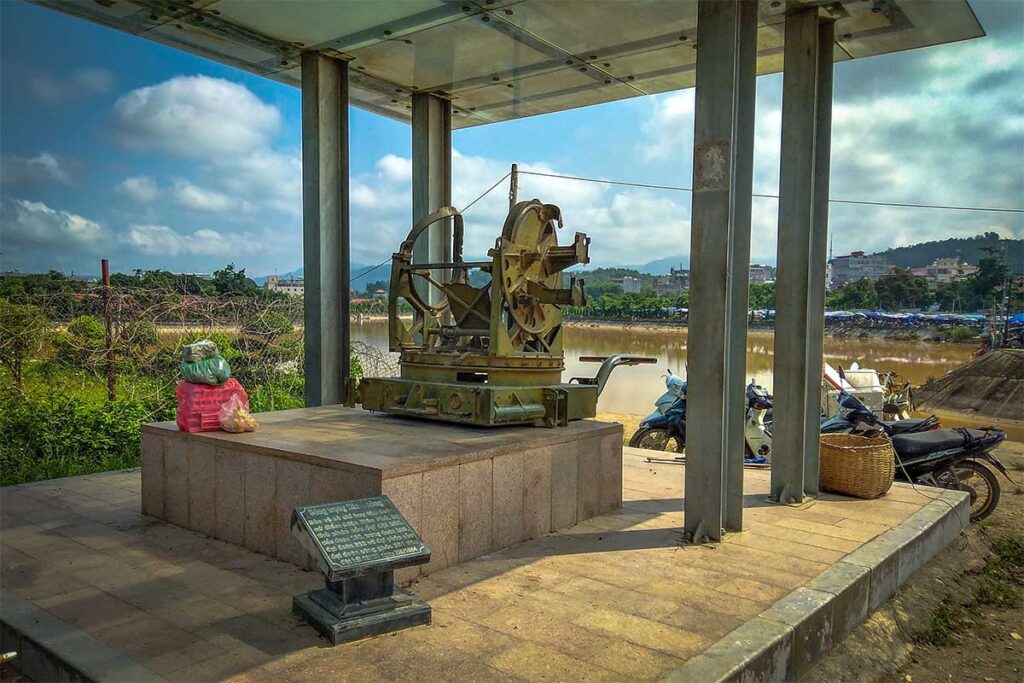
You’ll find signage explaining its role during the battle, along with a preserved French 4-barreled machine gun near the eastern end—a reminder of the fierce defense during the final hours of the conflict.
2.The local market around the bridge
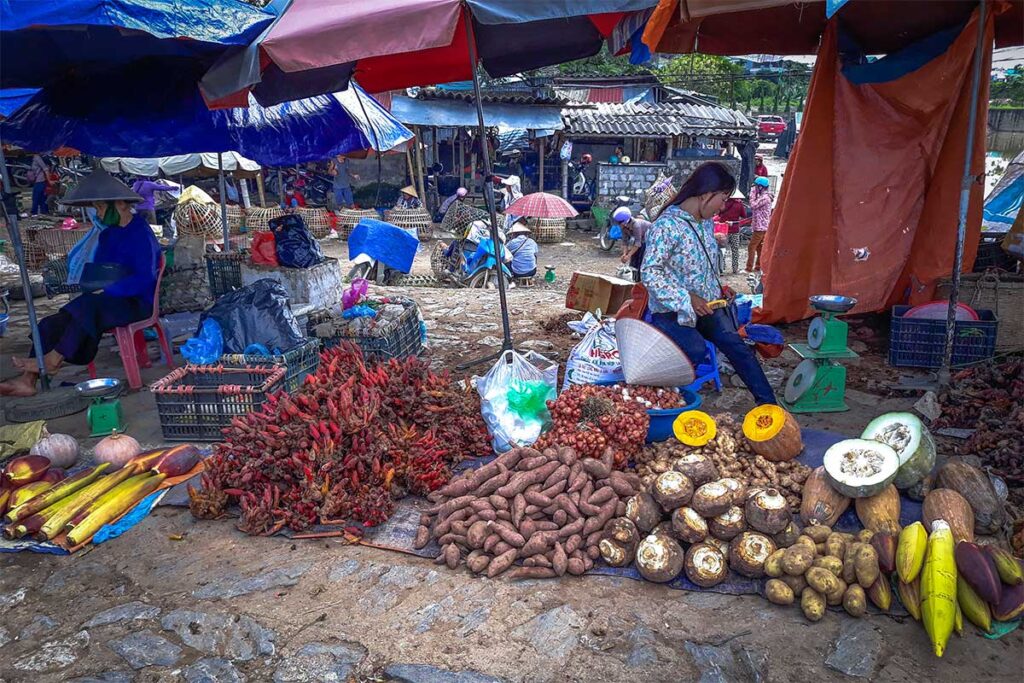
Behind the bridge sits an informal but vibrant local market. It’s not a tourist attraction per se, but full of daily life—food stalls, fresh produce, clothing, and all sorts of local goods.
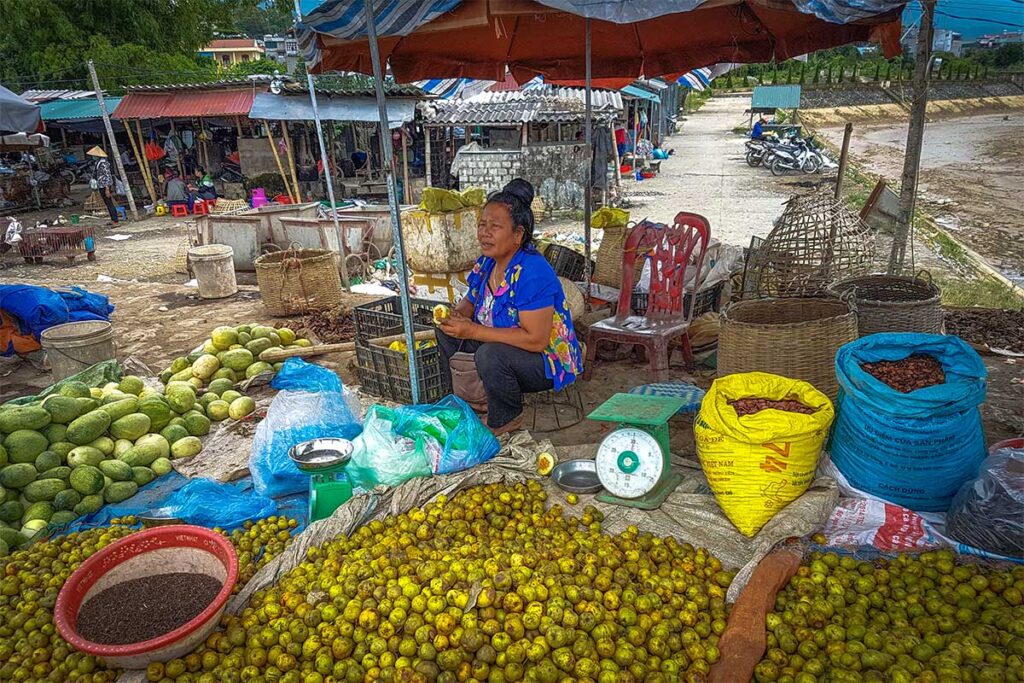
Many visitors find this street market just as memorable as the bridge, especially for its authentic feel. It’s more of a cultural stop than a major monument.
3. Nearby promenade and Riverside walk
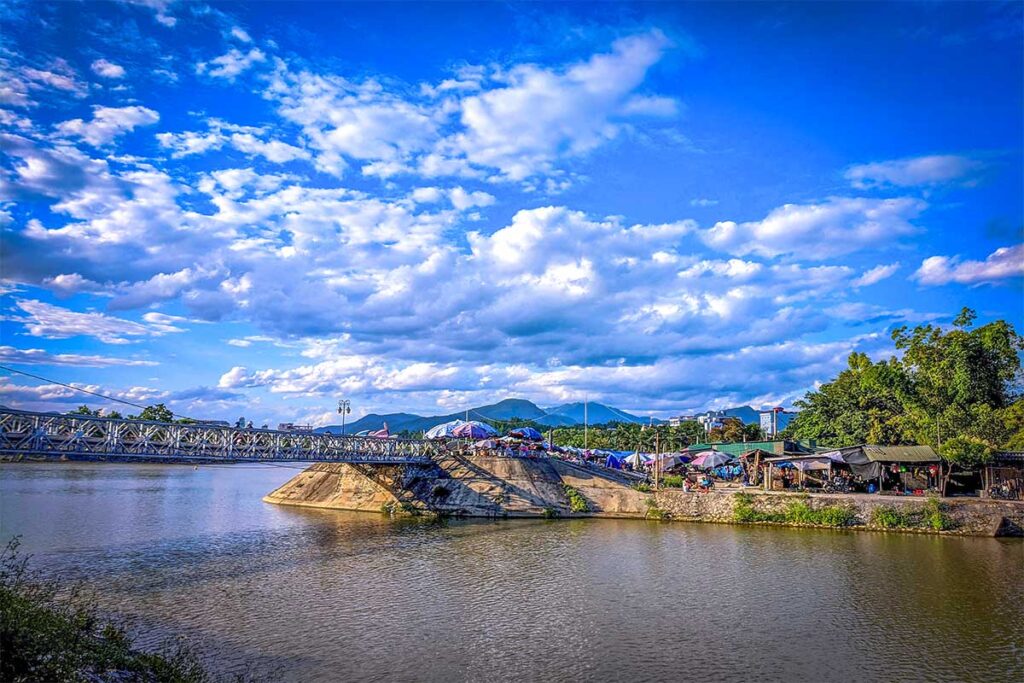
Recent beautification projects have added a pleasant riverside path near the bridge. Locals come here to jog, walk, or simply relax. It’s a small but welcome feature that rounds out the visit, giving the area a more lived-in and community-oriented feel.
How to visit Muong Thanh Bridge
Muong Thanh Bridge is located in Muong Thanh ward, right in the heart of Dien Bien Phu City. If you’re staying in a central hotel, it’s an easy walk and makes for a quick stop on a self-guided tour. The best time to visit is in the morning or late afternoon, when the nearby market is most active. For a meaningful visit, combine the bridge with other key historical sites in the area.
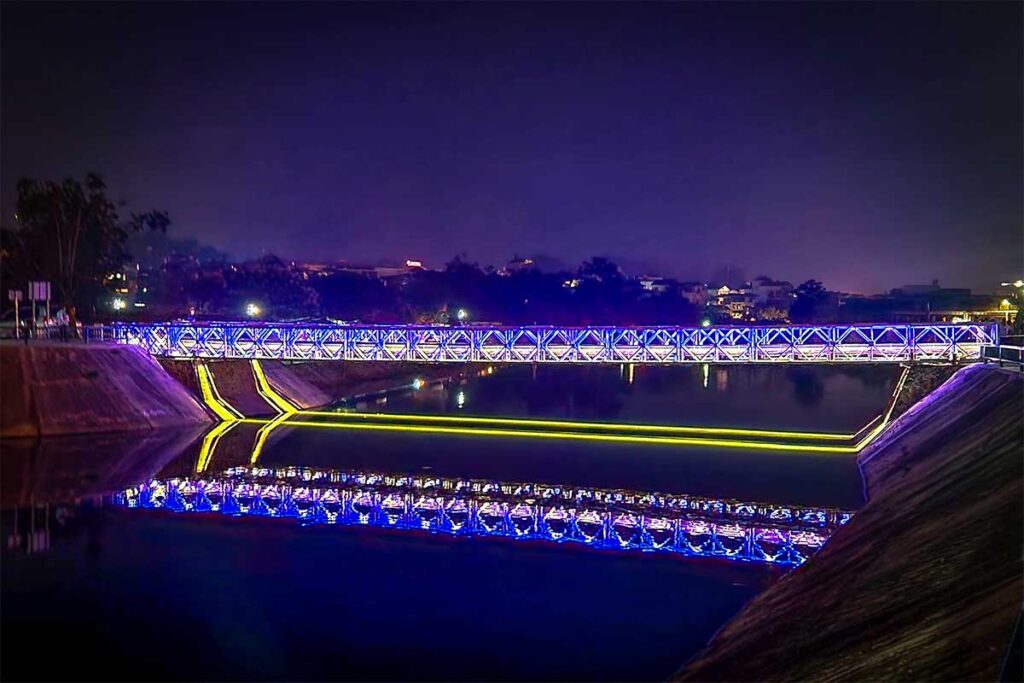
Combine with other historical sites
Start your day at the Dien Bien Phu Victory Museum to get the full historical background, then continue to nearby landmarks like De Castries’ Bunker, A1 Hill, and the Victory Monument. Muong Thanh Bridge fits naturally into this circuit and adds a different perspective to the story. If you’re staying outside the city, consider arranging a local driver to cover everything comfortably.
Is it worth visiting?
Muong Thanh Bridge may not look impressive at first glance, but it carries deep historical significance. Once a key military link during the Battle of Dien Bien Phu, it now offers a peaceful riverside walk and a glimpse into local life, especially with the market just behind it. The bridge is best appreciated when combined with other nearby war sites like A1 Hill and De Castries’ Bunker. On its own, it’s a quick stop—but if you’re already exploring Dien Bien Phu, it’s a meaningful addition to your visit.
Travel tips
- Go early or late – Morning and late afternoon are the best times for light, temperature, and market activity.
- Wear sturdy shoes – The bridge’s wooden planks can be uneven or slippery, especially when wet.
- Bring cash – Useful for snacks or small purchases at the market; card payment isn’t available.
- Check motorbike access – Rules change occasionally; motorbikes are not allowed any more to drive over.
- Plan a full route – Combine with nearby war sites and museum stops—see our full Dien Bien Phu guide for ideas.
